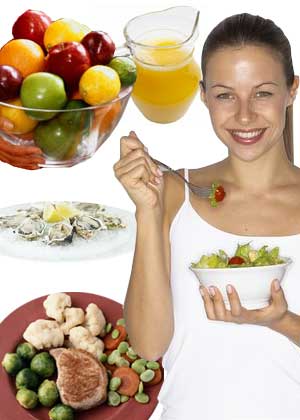Dash Diet

What began as a study in 1994 to study the effects of reducing sodium and increasing fruits and vegetable consumption on elevated blood pressure has turned into a diet that is recommended by many a health organization. The DASH diet recommends dietary modifications to the typical American diet so as to bring about a lowering effect on blood pressure. With more than 50 million Americans suffering from blood pressure and similar statistics in many other countries, it is little wonder that the DASH diet plan has many takers. While it is not a replacement for medicines, this hypertension diet can help in early stages of mild elevated blood pressure.
DASH diet
DASH (Dietary Approaches to Stop Hypertension) was a landmark study into observing the effects of altering the eating plan in adults suffering from high blood pressure. It was noticed that persons on DASH diet saw decreased blood pressure. In fact, the DASH diet has been recommended by the American Heart Association and the National Cancer Institute. The DASH diet has been tested and established by the NHLBI (National Heart, Lung and Blood Institute). The DASH diet works with lower levels of saturated fats, cholesterol and sodium.
It advocates a change in eating habits towards a healthier body. Studies showed that the DASH diet has been shown to lower both systolic and diastolic blood pressure. The DASH diet mirrors the Mediterranean diet in that it advocates lesser red meat and more fruits, vegetables and grains.
Fats do not directly raise your blood pressure but they play a major role in affecting the health of your heart and blood vessels. For people with mild hypertension, the reduction of blood pressure achieved by the combination of the DASH and low salt diet was 11.5/5.7 mmHg (systolic/diastolic), which is equivalent to the changes seen with blood pressure lowering medications.
DASH diet plan
The DASH diet plan aims at providing about 2000 calories a day. Its recommended servings are intended to provide:
- 4,700 milligrams of potassium
- 500 milligrams of magnesium
- 1,240 milligrams of calcium
But this diet plan does not involve a fixed or specific menu to be followed. The DASH diet plan is matched to a typical American diet, but with lower fat content and larger proportion of fruits and vegetables. DASH diet meals must be as colorful as possible. Bring in the vibrant colors from shredded red cabbage, pepper strips, pea pods, chopped radishes, sliced onions and grated carrots.
The DASH diet recommends fruits, vegetables, whole grains and low-fat dairy products. The role of sodium in affecting blood pressure has been studied and it has been seen that those who consumed lower sodium in their diet had lower blood pressure. Salt can come in hidden forms too - keep on guard for seasonings, tomato sauces, canned foods, condiments and butter flavorings. Calcium, potassium, and magnesium may help lower blood pressure. Incorporating the principles of the DASH diet along with physical activity can go a long way in keeping your blood pressure in check.
Hypertension diet
- Snack on fresh or dried fruits and chopped vegetables.
- Avoid high-fat, condiment dressings.
- Include potassium and calcium rich food such as yogurt, skim milk and bananas in your hypertension diet
- Go easy on the salt sprinkler
- Choose whole grain foods, like 100% whole wheat bread and hot oatmeal.
- Limit consumption of smoked and processed meats and canned soups
- Reduce the sauces in your seasonings, opt instead for herbs.
- Baking and broiling is recommended over frying
- Limit alcohol consumption since excessive quantities can weaken heart muscles and lead to hypertension.
Typically a hypertension diet is low in saturated fats and cholesterol. Stir fried vegetables and legumes such as black beans and garbanzo beans make for an appetizing meal. Studies have shown that turmeric, an essential condiment in many Asian and Indian dishes has considerable blood pressure reducing properties. Curcumin, the yellow pigment of turmeric has anti-inflammatory properties much like drugs such as hydrocortisone and phenylbutazone.
This vital ingredient has anti-oxidant properties that prevents oxidization of cholesterol within the body. Vitamin B6 is found in curcumin - vital in keeping homocysteine levels low. If homocysteine levels are allowed to rise, it can have an adverse effect on the blood vessel walls.
Garlic is also known to show lowering effects on blood pressure by nearly 5 - 10%. It lowers tri-gylceride levels and discourages clot formation and also boosts circulation. Garlic is also recommended for lowering high cholesterol
Top of the Page: Dash Diet
Tags:#dash diet #hypertension diet

Therapeutic Lifestyle Changes Diet
Intermittent Fasting Plan
Flexitarian Diet
Dukan Diet Plan
Diet Plateau
High Protein Diet
Elimination Diet
Raw Food Diet
Paleo Diet
Liver Cleansing Diet
Intermittent Fasting Diet
Low Fat Low Cholesterol Diet
Low Carb Diet
Vegan Diet Plan
Hay Diet
Sacred Heart Diet
Heart Attack Diet
Diet after Gastric Bypass
RICE Diet
Gluten Free Diet
Acid Reflux Diet
Detox Diet
Sonoma Diet
Glycemic Index Diet
Montignac Diet
Diabetic Diet Plan
Healthy Breastfeeding Diet
Negative Calorie Diet
Fad Diet
Blood Group Diet
Diverticulitis Diet
DASH Diet
Ornish Diet
3 Day Diet Strategy
Ketogenic Diet
Zone Diet Plan
Anti Aging Diet
South Beach Diet
Gall Bladder Diet
Low Cholesterol Diet
Low Sodium Diet
Diet and Kidney Disease
Scarsdale Diet Plan
Macrobiotic Diet
Osteoarthritis Diet
Depression Diet Plan
Migraine Diet
Restricted Salt Diet
Gout Diet
Rotation Diet
Diet Cancer Patient
Ways to better Health

Boost Metabolism
BMI Calculator
Low Fat Dessert
Whey Protein
Diet and Fitness
Fitness Exercise Articles
Cardio Workout
Aerobics
Yoga
Body Toning
Top of the Page: Dash Diet
Popularity Index: 101,480

